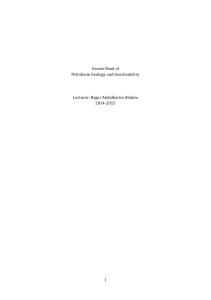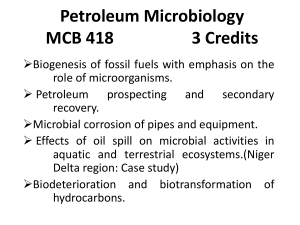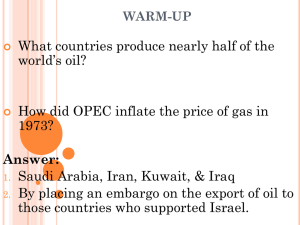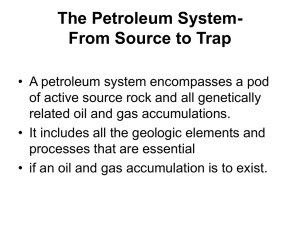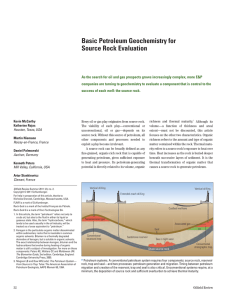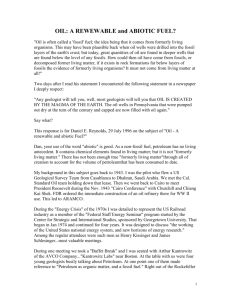Enhanced Understanding of Coastal Plain Aquifers
advertisement
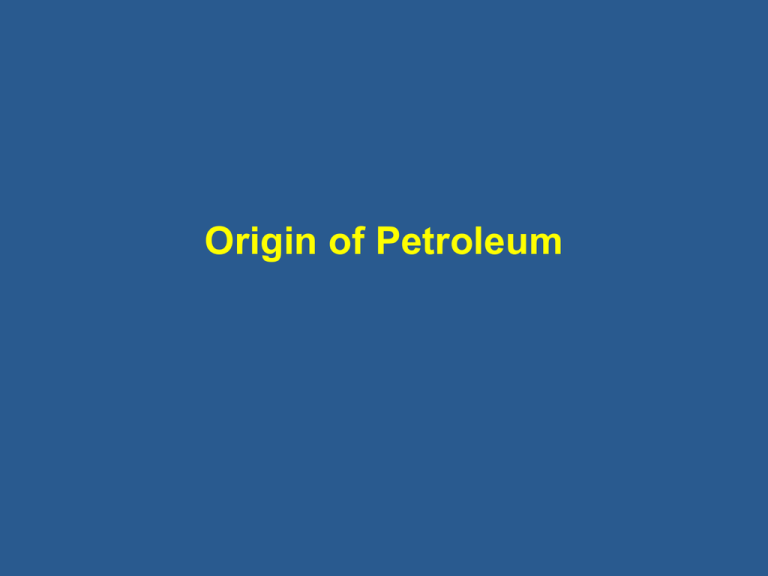
Origin of Petroleum Results of 2005 AAPG Research Conference Presentations at Conference • L. Anissimov – LUKOIL-VolgogradNIPImorneft • C. Barker* – University of Tulsa • A. A. Brown* – Independent Consultant • J. L. Charlou – Geosciences Marines, Institut Francais de recherche pour l’exploitation de la mer (IFREMER) • W. G. Dow* – Chief Geochemist, EOG Resources, Inc. • M. Hovland* – Statoil • C. W. Hunt – Independent Consultant • B. J. Katz* – Chevron • S. B. Keith – MagmaChem, LLC • A. A. Kitchka – Centre For Aerospace Research of the Earth (CASRE), Nat’l Acad. Sci. Ukraine • M. R. Mello*– High Resolution Technology and Petroleum Institution • J. Seewald – Woods Hole Oceanographic Institution • P. Szatmari – Petrobras Research Center (CENPES/GEOTEC) • B. M. Valyaev – Oil and Gas Problems Institute, Russian Academy of Sciences • *= Presentation supporting organic origin of petroleum Summary of Katz et al. (2008) 1. Organic (Biogenic) Formation of Petroleum 2. Inorganic (Abiogenic) Formation of Hydrocarbons a. Mantle Degassing (Deep Hydrocarbon Degassing) b. Serpentization & Fischer-Tropsch Reactions 3. Importance of Fluid Flow in Hydrocarbon Migration Organic (Biogenic) Origin of Petroleum At the AAPG Research Conference, presenters in support of an organic origin provided a single and uniform model in which sedimentary organic matter is thermally converted to oil and gas. Inorganic (Abiogenic) Origin of Petroleum 1. At the AAPG Research Conference, some presenters in support of an inorganic origin provided a model based on mantle degassing associated with the polymerization of low molecular weight compounds (deep hydrocarbon degassing). 2. Some presenters advocated serpentization of ultramafic rocks coupled with Fischer-Tropsch catalyzed reactions in which carbon monoxide and hydrogen are converted into hydrocarbons. Organic Formation of Petroleum 1. Principal school of thought of petroleum geoscientists is that the origin of petroleum is by organic means. 2. Organic formation of petroleum is the assumed origin of oil and gas for this class. 3. Exploration strategies discussed in this class are based on an organic origin of petroleum. What is Petroleum (Petra=Rock, Oleum=Oil) 1. Organic origin. 2. Non-renewable resource. 3. Crude oil comprised of hydrocarbons (H, C) and nonhydrocarbons, including nitrogen, sulfur and oxygen (NSO’s). 4. Occurs naturally as gas (methane), liquid (petroleum), semisolid (bitumen), and solid (asphalt). Criteria for Optimal Occurrence 1. Rapid deposition of fine grain sediments and associated organic matter in aqueous reducing environments. 2. Compaction and chemical change of organic matter due to thermal alteration resulting in generation of petroleum. 3. Expulsion and primary migration of oil and gas from source rock to reservoir rock associated with seal. 4. Secondary migration in reservoir rock and accumulation in trap. Limiting Conditions for Occurrence 1. Aqueous Reducing Sedimentary Environment (Marine or Non-marine) 2. Depth of Burial (Geothermal Gradient, Heat Flow) 3. Temperature (150-350 degrees F for Liquid HC and 350-450 degrees F for Thermogenic Gas) 4. Length of Cooking Time (estimated 1-2 million years minimum) 5. Type of Organic Matter (Oil or Gas Prone) Chemistry of Petroleum 1. Paraffins (Straight or Branched Chains) 2. Naphthenes (Saturated Ring Structures) 3. Aromatics (Benezene Ring with Double Bonds) 4. More Hydrogen Rich, More Oil Prone 5. Non-hydrocarbons (Asphaltenes and Residins) API Gravity 1. American Petroleum Institute (API) Gravity 2. 141.5/Specific Gravity at 60 degrees F minus 131.5 3. Low Gravity (10 to <20 degrees) 4. Intermediate Gravity (20 to 40 degrees) 5. High Gravity (41 to >50 degrees) Types of Organic Matter (Kerogen) 1. Algal (Phytoplankton) 2. Herbaceous (Spores, Pollen, Leaf Cuticle) 3. Woody 4. Coaly 5. Amorphous (Altered Algal or Herbaceous, Enriched in Hydrogen through Biological Processes) HC in Present Day Sediments 1. Odd Carbon Numbers Dominant 2. High Percent of Heavy HC and Non-hydrocarbons 3. Biogenic not Thermogenic Methane 4. Low Percent of C2 to C6 5. Light HC (C12-14) Absent Methods for Determining Thermal Maturation 1. Thermal Alteration Index (TAI, Visual Kerogen, Color) 2. Vitrinite Reflectance (% Ro) 3. Weight Percent of C in Kerogen 4. Fixed C Index 5. Coal Index Source Rock Criteria 1. Maturation State 2. State of Hydrocarbons 3. Type of Organic Matter (Kerogen) 4. Color of Shale is not a Reliable Criterion Quality Source Rock Characteristics 1. Contact with Reservoir Rock 2. Shale Richness (2 to 4 plus % TOC, Average Shale=1% TOC) 3. Carbonate Mudstone Richness (0.5 to 1 plus % TOC) 4. Type of Organic Matter (Algal and Amorphous for Oil) 5. Sufficient Saturation Level (HC to C Ratio) to Support Expulsion and Migration


